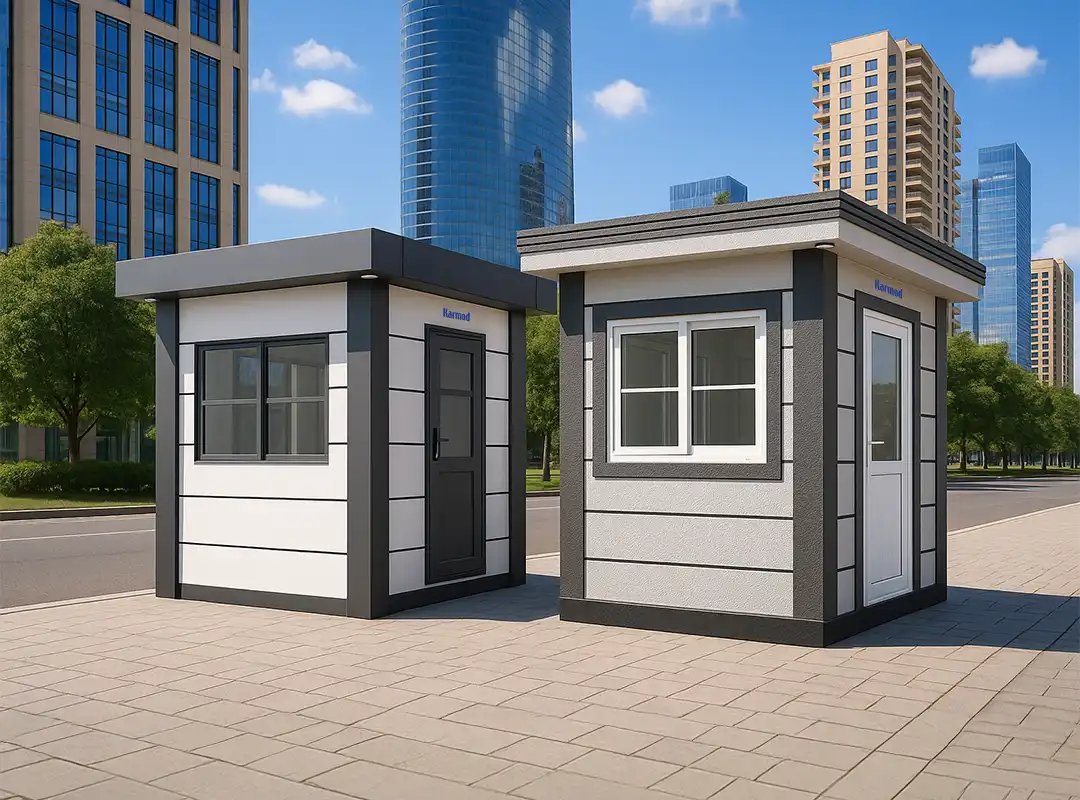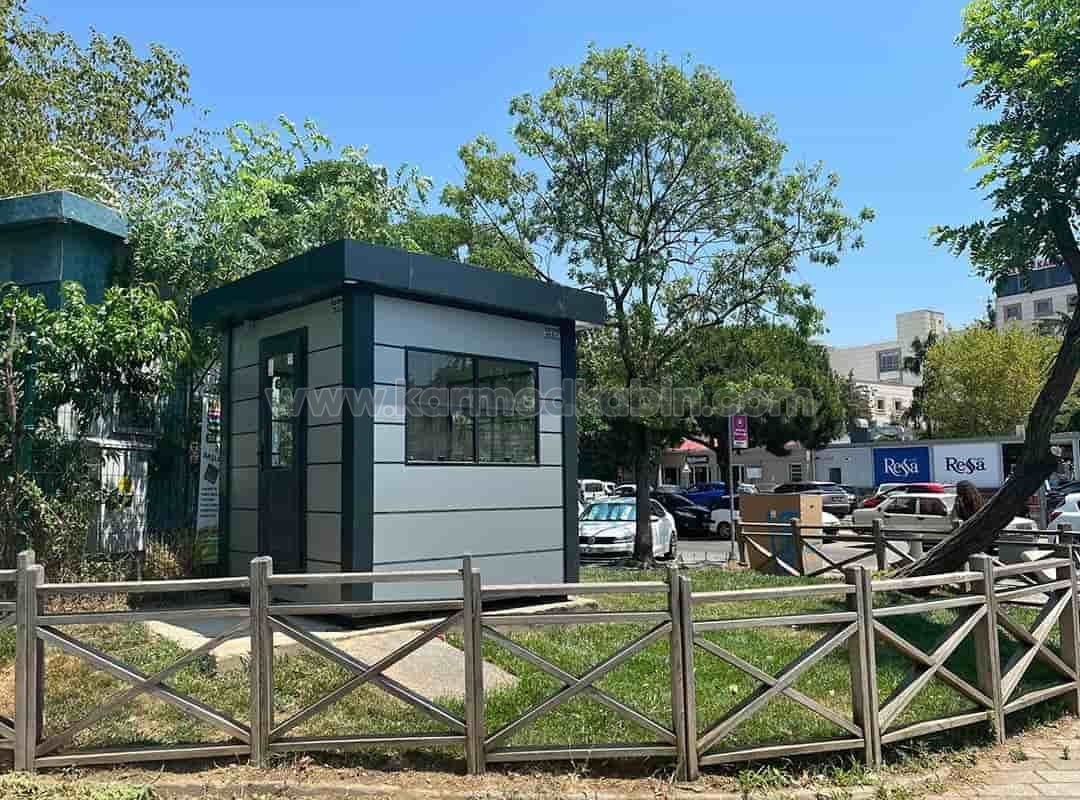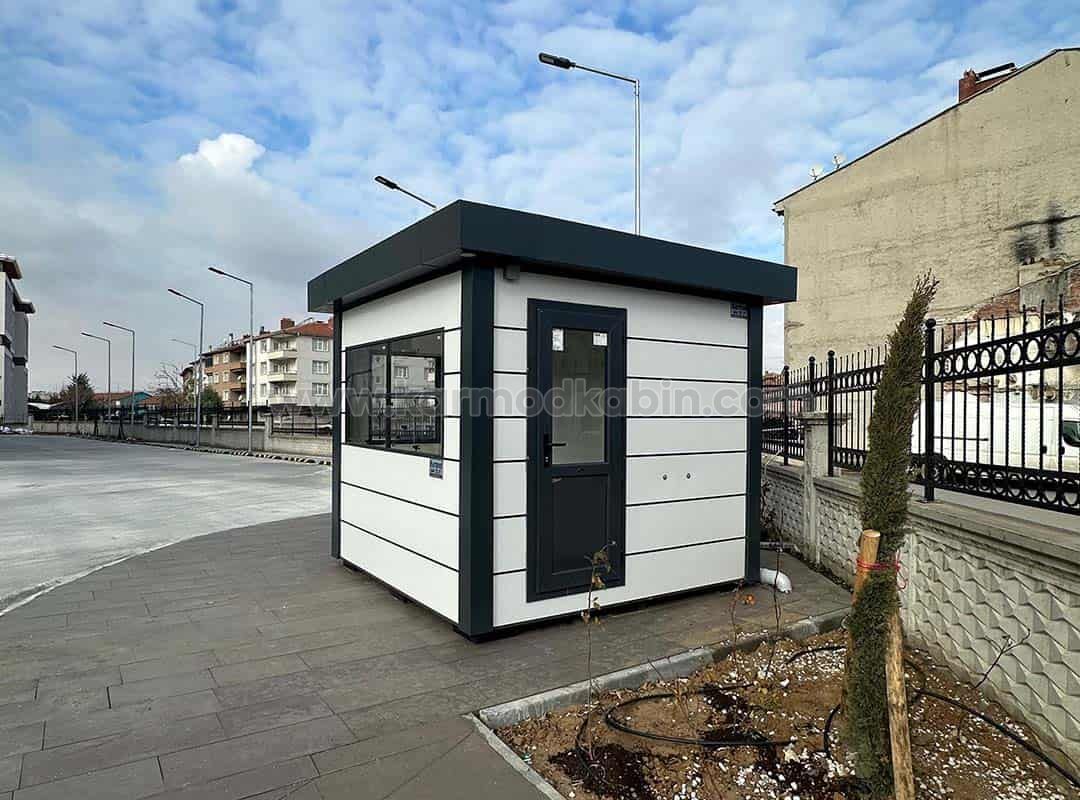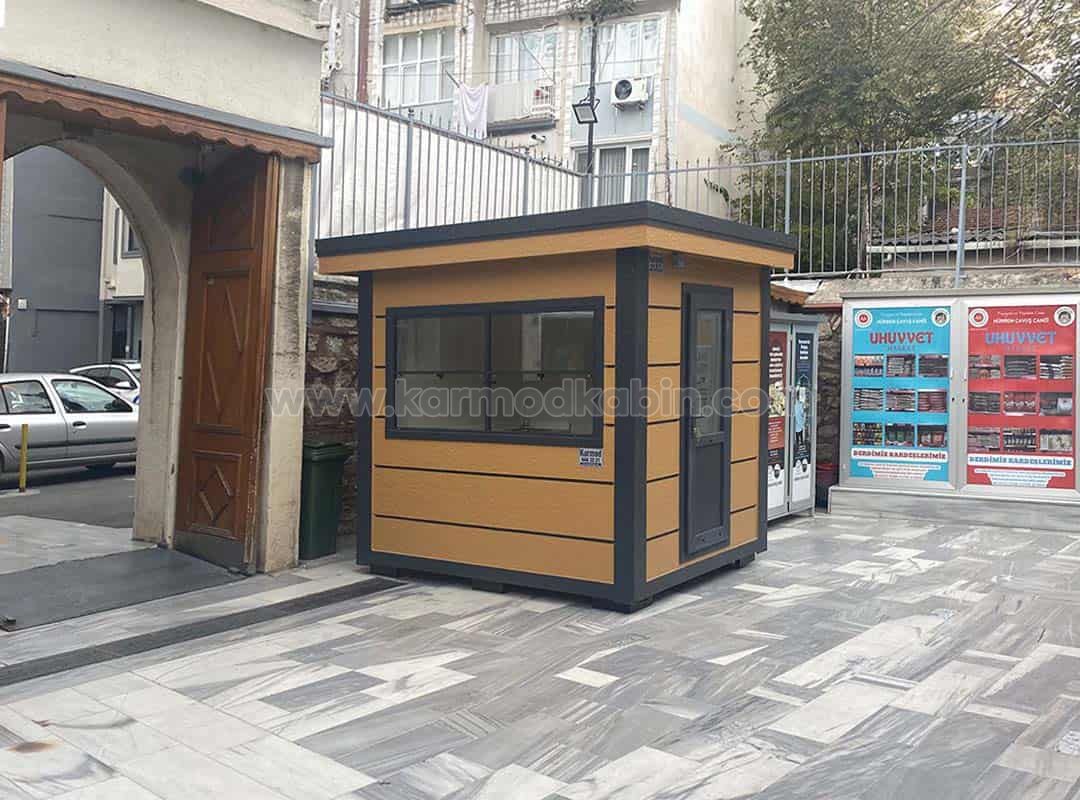
In the world of modern prefabricated and modular cabins, cladding plays a far greater role than just exterior aesthetics. It determines the building’s strength, insulation quality, durability, and resistance to external elements. Among the most preferred options for cabin construction, composite cladding and Betopan cladding stand out for their distinctive performance characteristics. While both offer long-lasting protection and stylish finishes, their structure, composition, and application methods differ significantly. Choosing between them requires an understanding of how each material behaves under various environmental conditions and usage needs.
Cabin buyers and investors often find themselves asking a key question: Which cladding type offers better value, efficiency, and visual appeal? The answer depends on the priorities of your project - whether it’s modern aesthetics, weather resistance, cost control, or sustainability. In this guide, we’ll explore the detailed differences between composite cladding and Betopan cladding, evaluate their advantages, and help you decide which one suits your cabin project best.
Cladding is one of the most essential elements in the construction of modern cabins, acting as both a protective shield and a design feature. It defines how the cabin performs against external factors such as rain, wind, and UV exposure while also shaping its overall aesthetic character. Beyond appearance, cladding directly influences insulation, structural stability, and even the resale value of a cabin. For modular buildings that must endure transportation and installation in diverse environments, the quality of exterior cladding determines how long the structure will maintain its form, color, and integrity.
In today’s prefabricated construction industry, cladding materials have evolved far beyond simple coatings. They’re engineered systems designed to combine beauty, functionality, and performance. Whether you’re planning a residential cabin, an office unit, or a tourism facility, the choice of cladding can significantly affect maintenance frequency, interior comfort, and long-term energy efficiency. The right cladding doesn’t just protect - it adds identity, strength, and value to your investment.
Main functions of cabin cladding include:
With this understanding, the difference between composite and Betopan cladding becomes more meaningful - each fulfills these functions in a distinct way.
Before comparing the two materials in depth, it’s essential to understand the general characteristics of composite and Betopan cladding systems. Both are designed to enhance a cabin’s exterior durability and aesthetics, yet they serve slightly different purposes. Composite cladding is a modern, lightweight, and visually flexible option made from polymer and aluminum layers, offering sleek finishes ideal for contemporary architecture. Betopan, on the other hand, is a fiber-cement-based board that prioritizes strength and longevity,
performing exceptionally well in harsh environments.
In practical use, composite cladding shines where appearance and versatility matter most - such as offices, luxury cabins, or hospitality units that require a modern façade. Betopan cladding, however, excels in areas demanding robustness, insulation, and weatherproofing, such as permanent housing modules or high-humidity zones. Understanding these general profiles helps cabin buyers identify which system aligns best with their project’s needs, both visually and structurally.
Composite cladding is a contemporary exterior system made from multiple bonded layers, typically combining aluminum, polymer, and protective coatings. This hybrid structure gives it a unique strength-to-weight ratio, making it both durable and lightweight. For modern cabin projects, composite panels offer clean lines, uniform finishes, and a polished appearance that transforms simple structures into elegant architectural pieces. They are particularly popular for prefabricated cabins, where fast installation, precision fitting, and stylish visual impact are crucial.

One of the standout benefits of composite cladding is its design flexibility. Available in a wide range of textures, colors, and finishes, it allows cabin owners to achieve virtually any aesthetic - from minimalist matte tones to glossy metallic effects. In addition to aesthetics, composite materials are resistant to corrosion, UV rays, and moisture, which helps maintain their appearance over time. These features make composite cladding an excellent choice for businesses and homeowners seeking a low-maintenance yet visually impressive exterior.
Advantages of composite cladding:
With its sleek look and functional reliability, composite cladding offers the perfect balance between innovation and design excellence in today’s modular cabin market.
Betopan cladding is a high-performance exterior material made from a mixture of cement, cellulose fibers, and natural additives, pressed into solid, fiber-reinforced panels. This combination results in exceptional strength and density, making Betopan one of the most reliable materials for long-lasting cabin construction. It provides structural stability even in harsh climates, protecting the building against temperature fluctuations, moisture, and fire. For cabins used in industrial zones, mountain areas, or coastal regions, Betopan offers a strong barrier that withstands environmental stress without deformation or cracking.
Beyond its strength, Betopan cladding contributes to energy efficiency and comfort. Its dense composition provides excellent thermal and acoustic insulation, helping maintain stable indoor temperatures while reducing outside noise. Moreover, it is highly resistant to insects, mold, and water absorption, extending the lifespan of the structure with minimal maintenance. The matte, natural appearance of Betopan also creates a modern yet earthy look that complements both urban and rural environments, making it a favorite among architects who value durability and design harmony.

Key advantages of Betopan cladding:
Betopan cladding stands as a symbol of endurance - a material built not just to last, but to protect and perform in all conditions.
The fundamental difference between Betopan and composite cladding begins at the material level. Betopan is a fiber-cement board, made from natural cellulose fibers, cement, and mineral fillers. This dense composition provides excellent resistance to heat, impact, and fire - characteristics that make it ideal for long-term, heavy-duty use. Fiber cement behaves like reinforced concrete in thin panel form, giving cabins solid structural performance and thermal stability. It’s particularly well-suited for regions with drastic temperature shifts or humid weather conditions where longevity is essential.
Composite cladding, on the other hand, is a polymer-based panel that combines aluminum sheets with polyethylene or fire-resistant cores. Its multilayered design ensures flexibility, lightness, and a visually refined finish. While not as dense as Betopan, it offers superior ease of installation and a high-end appearance with minimal maintenance. This difference in material composition defines the key distinction between the two: Betopan is sturdier and more industrial, while composite cladding is lighter and more design-oriented, giving each a unique advantage depending on project goals.
Core differences in composition:
Knowing these material fundamentals helps cabin buyers align technical performance with their preferred look and function.
When choosing the right exterior cladding for a cabin, insulation performance is one of the most important criteria - it directly affects indoor comfort, energy costs, and long-term efficiency. Betopan cladding, being a dense fiber-cement material, naturally provides excellent thermal insulation. Its solid structure reduces heat transfer between the interior and exterior, keeping the cabin warm during winter and cool in summer. This makes it a smart choice for regions with strong seasonal contrasts or for users who prioritize energy savings and eco-friendly living.
Composite cladding, while lighter in structure, performs differently. It doesn’t have the same natural density as Betopan, but when paired with high-quality insulation layers, it contributes to maintaining internal temperature effectively. Its reflective aluminum surface also prevents heat buildup, making it suitable for sunny, warm climates. In terms of acoustic insulation, Betopan again leads the way, thanks to its fiber-reinforced composition that absorbs sound waves and minimizes exterior noise - an important feature for cabins placed near busy roads, industrial sites, or touristic areas.
Insulation comparison at a glance:
Both materials can support comfortable, quiet, and energy-efficient living - the right choice depends on where and how your cabin will be used.

Durability and resistance to environmental stress are two defining factors when evaluating cladding materials for cabins. In regions exposed to heavy rain, high humidity, intense sunlight, or freezing winters, the outer layer of a structure must maintain its form and color over time. Betopan cladding, with its fiber-cement base, is exceptionally resistant to moisture absorption and thermal expansion. It prevents cracking, warping, or surface erosion, ensuring a longer structural lifespan with minimal upkeep. This makes it a preferred choice for industrial zones, mountain regions, and coastal projects where constant exposure to natural elements is unavoidable.
Composite cladding, while lighter, demonstrates impressive weather resistance through advanced coatings and protective film layers. Its aluminum exterior deflects UV rays, preventing discoloration and surface fading, while its polymer core resists corrosion and moisture. However, in extremely cold or humid climates, Betopan tends to outperform composite panels due to its inherent density and cement-based strength. Both materials can provide years of stability, but their endurance varies depending on location and environmental conditions.
Performance overview in harsh conditions:
Choosing the right cladding type ensures not only long-term protection but also reduced maintenance costs - securing both your investment and peace of mind.
In cabin design, visual appeal plays a major role in creating a sense of quality and harmony with the environment. Composite cladding offers remarkable aesthetic flexibility, allowing designers and buyers to choose from a wide range of colors, textures, and surface treatments. From sleek metallic tones and brushed aluminum effects to wood-like finishes, composite panels can replicate almost any visual style. Their uniform, smooth surface delivers a refined, contemporary look - ideal for cabins used as modern offices, sales points, or hospitality units where visual impact matters as much as durability.
Betopan cladding, on the other hand, carries a more natural and architectural appearance. Its matte, mineral texture provides a sense of solidity and authenticity that works beautifully in both urban and rural settings. It can be painted in various tones, from warm neutrals to cool grays, allowing it to blend harmoniously with its surroundings. Unlike composite panels that focus on precision and sleekness, Betopan emphasizes character and permanence - a look that feels organic and timeless.
Design comparison highlights:
When beauty meets performance, both cladding types offer their own expression - one sleek and futuristic, the other grounded and natural.

When it comes to choosing the right cladding, understanding installation time, maintenance needs, and total cost is just as crucial as aesthetics or durability. Composite cladding offers a major advantage in this area: it’s lightweight, pre-cut, and easy to handle, which reduces labor and installation time. Most panels come ready to mount with hidden fixing systems that allow for quick assembly and a seamless finish. This makes composite panels especially suitable for projects requiring tight deadlines or frequent relocations, such as portable cabins and commercial modules.
Betopan cladding, while heavier, offers a sturdier installation once mounted. It requires more precise cutting and anchoring during setup but rewards users with a solid, noise-resistant wall structure. Maintenance frequency also differs: composite panels mainly need simple surface cleaning, whereas Betopan may require occasional sealing or repainting to maintain its natural surface protection. From a financial standpoint, composite panels usually have a higher upfront cost, but their easy handling and modern appeal can lower long-term labor expenses. Betopan, though initially more labor-intensive, offers a better lifespan-to-cost ratio for permanent installations.
Practical comparison of both materials:
Ultimately, your choice depends on project priorities - speed and style, or durability and endurance.
As environmental awareness becomes a central part of modern construction, choosing eco-friendly materials is now a key priority for cabin buyers. Both composite and Betopan cladding systems bring unique environmental advantages, but in different ways. Betopan, made primarily from natural materials such as cement, cellulose fibers, and water, is inherently sustainable. Its composition contains no harmful chemicals or plastics, and it offers a long service life, minimizing the need for frequent replacements. This reduces waste generation and supports sustainable resource use, making it a strong choice for eco-resorts, nature lodges, and permanent residential cabins focused on green living.
Composite cladding, while containing synthetic layers, contributes to sustainability through its energy efficiency and recyclability. Its reflective outer layer reduces the amount of heat absorbed by the structure, lowering cooling demands and operational energy consumption. Many modern composite panels are also produced using recycled aluminum, which minimizes raw material extraction. Moreover, their long lifespan and low maintenance requirements mean less environmental impact over time compared to paint-based or short-lived façade systems.
Eco-friendly highlights:
By selecting the right cladding, cabin owners can not only achieve a modern aesthetic but also play a meaningful role in supporting a more sustainable future.
Selecting between composite and Betopan cladding ultimately depends on your project’s goals, budget, and environment. If your priority is a modern, lightweight, and visually refined appearance, composite panels deliver outstanding results. They’re perfect for portable cabins, sales offices, or any project requiring fast setup and a polished, contemporary look. On the other hand, if your focus is durability, insulation, and long-term resistance, Betopan cladding stands as the more reliable choice - ideal for permanent cabins, industrial sites, or regions facing harsh weather.
Experts often advise clients to evaluate both the functional and aesthetic sides of their decision. While composite cladding offers a luxurious, low-maintenance façade, Betopan provides unmatched strength and a natural architectural texture. Both materials can be integrated into sustainable, energy-efficient designs, but the key lies in matching the right system to the right use case. Consulting professionals who understand prefabricated construction ensures that your investment not only looks great but also performs perfectly for decades.
Our professional recommendation:
Ready to select the best cladding for your next cabin project?
Contact our team today to explore design options, receive expert guidance, and get a personalized quotation directly from our production specialists. Let’s build your perfect cabin - durable, efficient, and designed to impress.